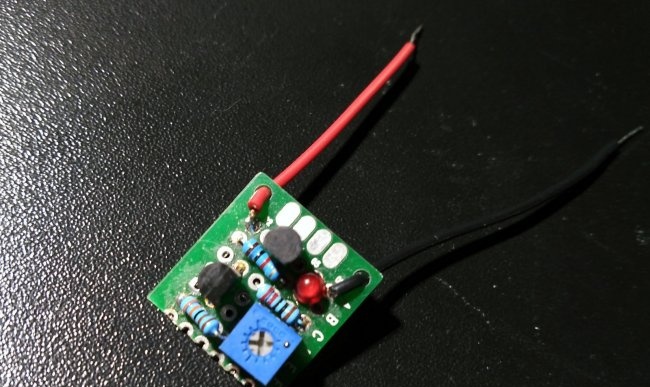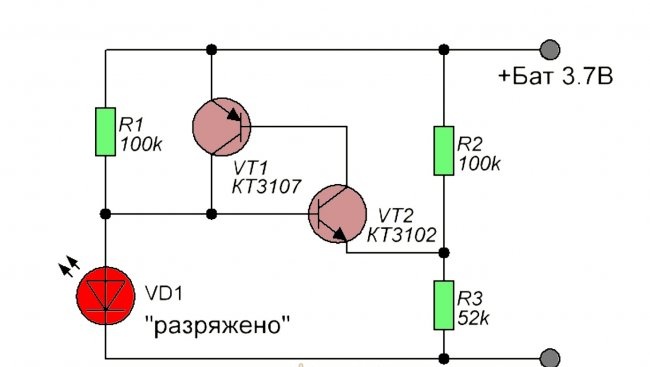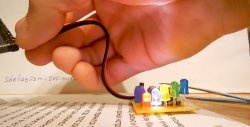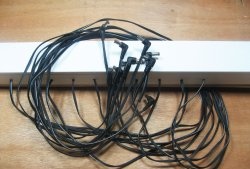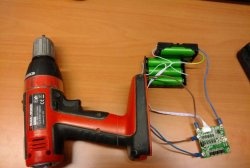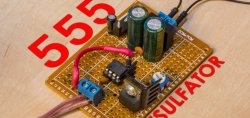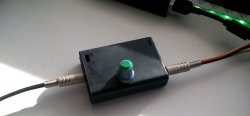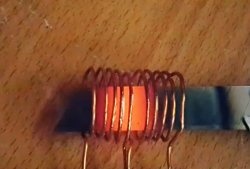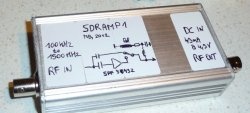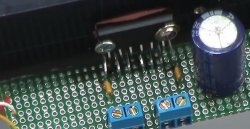Simple indicator of Li-ion battery discharge
How tightly Li-ion batteries have entered our lives. The fact that they are used in almost all microprocessor electronics is already the norm. So radio amateurs have long adopted them and use them in their homemade products. This is facilitated by the significant advantages of Li-ion batteries, such as small size, large capacity, and a large selection of designs of various capacities and shapes.
The most common battery is 18650, its voltage is 3.7 V. For which I will make a discharge indicator.
It’s probably not worth telling how low discharge is harmful to batteries. And for batteries of all types. Proper use of batteries will extend their life several times and save you money.
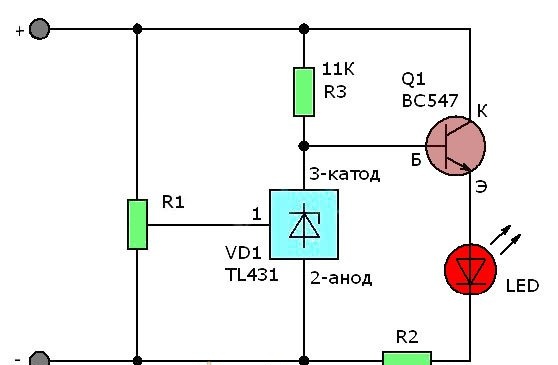
The circuit is quite universal and can operate in the range of 3-15 volts. The response threshold can be adjusted using a variable resistor. So the device can be used for almost any battery, be it acid, nickel-cadmium (nicd) or lithium-ion (Li-ion).
The circuit monitors the voltage and as soon as it drops below a preset level, it lights up Light-emitting diode, signaling that the battery is low.
The circuit uses an adjustable Zener diode TL431 (link where I got it). In general, this zener diode is a very interesting radio element, which can significantly make life easier for radio amateurs when constructing circuits related to stabilization or threshold operation. So take it into service, especially when building power supplies, current stabilization circuits, etc.
The transistor can be replaced with any other NPN structure, the domestic analogue of KT315, KT3102.
R2- adjusts brightness LED.
R1 is a variable resistor with a nominal value of 50 to 150 kOhm.
The value of R3 can be increased to 20-30 kOhm to save energy if a high gain transistor is used.
If you do not have an adjustable stabilizer TL431, then you can use a proven Soviet circuit with two transistors.
The response threshold is set by resistors R2, R3. Instead, you can solder one variable to allow adjustment and reduce the number of elements. Soviet transistors can be replaced with BC237, BC238, BC317 (KT3102) and BC556, BC557 (KT3107).
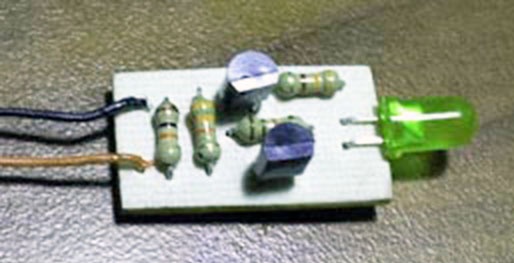
The circuit can be assembled on a board or mounted. Put on the heat shrink tube and blow it with a hot air gun. Attach with double-sided tape to the back of the case. I personally installed this board in a screwdriver and now I don’t drive its batteries until they are critically discharged.
You can also connect a buzzer (squeaker) in parallel with the resistor with the LED, and then you will know exactly about the critical thresholds.
The most common battery is 18650, its voltage is 3.7 V. For which I will make a discharge indicator.
It’s probably not worth telling how low discharge is harmful to batteries. And for batteries of all types. Proper use of batteries will extend their life several times and save you money.
Charging indicator circuit

The circuit is quite universal and can operate in the range of 3-15 volts. The response threshold can be adjusted using a variable resistor. So the device can be used for almost any battery, be it acid, nickel-cadmium (nicd) or lithium-ion (Li-ion).
The circuit monitors the voltage and as soon as it drops below a preset level, it lights up Light-emitting diode, signaling that the battery is low.
The circuit uses an adjustable Zener diode TL431 (link where I got it). In general, this zener diode is a very interesting radio element, which can significantly make life easier for radio amateurs when constructing circuits related to stabilization or threshold operation. So take it into service, especially when building power supplies, current stabilization circuits, etc.
The transistor can be replaced with any other NPN structure, the domestic analogue of KT315, KT3102.
R2- adjusts brightness LED.
R1 is a variable resistor with a nominal value of 50 to 150 kOhm.
The value of R3 can be increased to 20-30 kOhm to save energy if a high gain transistor is used.
If you do not have an adjustable stabilizer TL431, then you can use a proven Soviet circuit with two transistors.
The response threshold is set by resistors R2, R3. Instead, you can solder one variable to allow adjustment and reduce the number of elements. Soviet transistors can be replaced with BC237, BC238, BC317 (KT3102) and BC556, BC557 (KT3107).

The circuit can be assembled on a board or mounted. Put on the heat shrink tube and blow it with a hot air gun. Attach with double-sided tape to the back of the case. I personally installed this board in a screwdriver and now I don’t drive its batteries until they are critically discharged.
You can also connect a buzzer (squeaker) in parallel with the resistor with the LED, and then you will know exactly about the critical thresholds.
Similar master classes
Particularly interesting
Comments (6)

